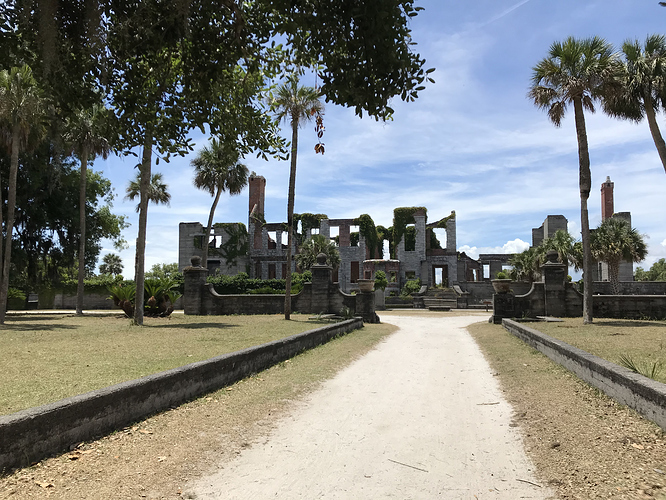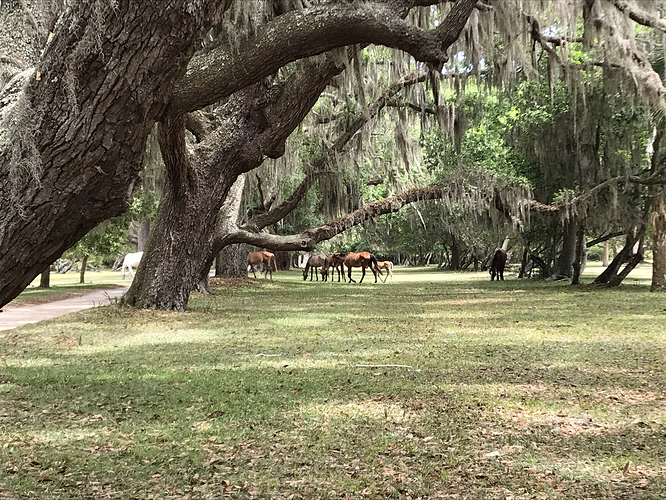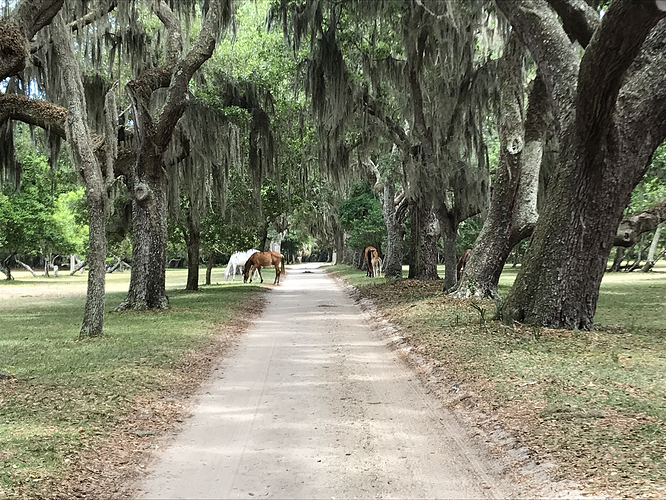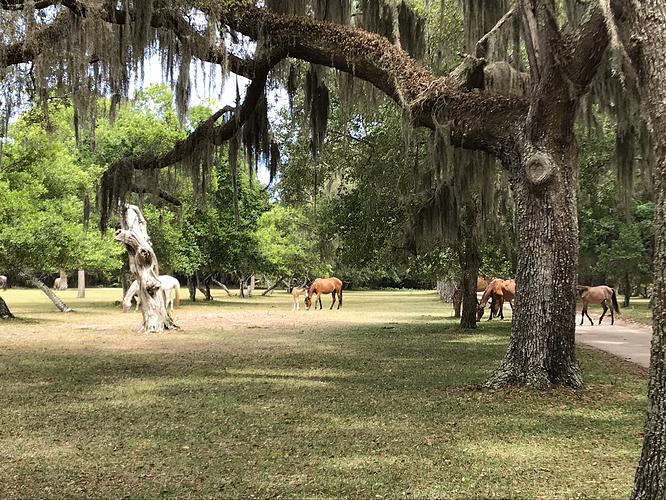We visited Cumberland Island National Seashore yesterday. The feral horses on the island (100-200) are descended from carriage and riding horses back when the island was owned by plantation owners, and later, the Carnegie family. From what I read of the history, the slaves were Gullah/Geechee and lived in thatched huts.
Anyway, the Carnegie mansion (they repaired and completed one of the old plantation houses) is a neat set of ruins. But we really went for the ponies.
The horses are not managed at all by the NPS. They have shorter lifespans (10-12 years) and are loaded with parasites. Lots of duns were present, which seems to be what horses go back to over many generations. Cute little palomino foal. The NPS is strict about telling people not to get too close. They recommend 50 feet. We kept our distance so as not to disturb, especially when the foal was present. The stallion might decide you’re a threat. The ranger mentioned several people have been injured this year because they want to get too close. We saw one idiot trying to approach. I filmed it, hoping for a nice “don’t do this” video, but the horse just moved away. Another horse walked right up to a tree where some picnickers were settling down for lunch and gave himself a good scratching on a lower limb. He was very close to the picnic table and the people were a little frightened and unsure. When he was satisfied, he just nonchalantly walked off, completely ignoring the people that were within 6 feet of him, lol.






 Apparently they are born on the island from time to time. Such a cool place!
Apparently they are born on the island from time to time. Such a cool place!